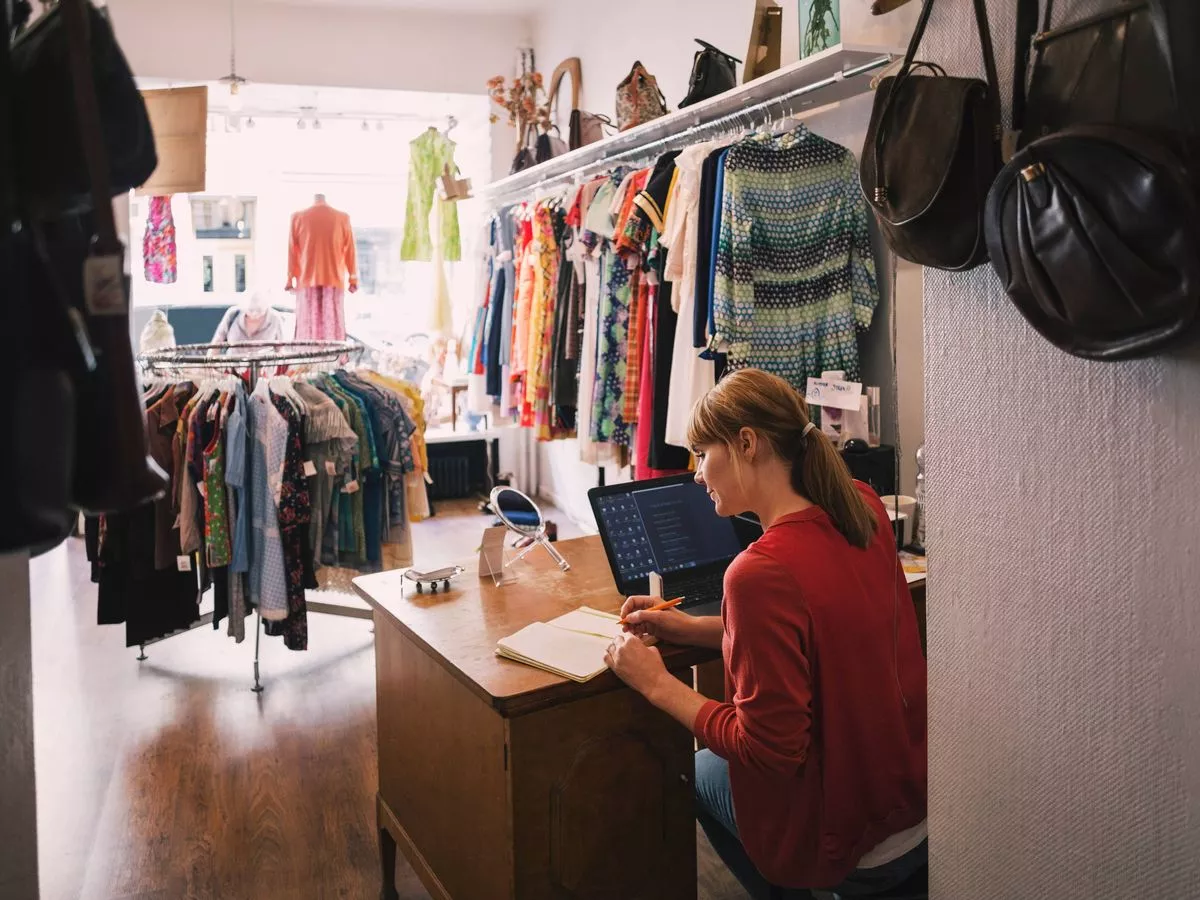By NBE
Copyright newbusinessethiopia

The Children’s Investment Fund Foundation (CIFF) invests in solutions that ensure children are healthy, safe, and have opportunities to thrive, tackling challenges from climate change to health, nutrition, and women’s empowerment.
During the second Africa Climate Summit in Addis Ababa (8–10 September 2025), CEO Kate Hampton highlighted how climate impacts—like unsafe air, energy poverty, and climate-related school disruptions—directly affect children. Integrated, multi-sectoral approaches, she explained, can improve health, education, and economic opportunities simultaneously.
Kate Hampton sat down with New Business Ethiopia Editor Mekonnen Teshome to share CIFF’s vision for Africa-led climate solutions and the role of philanthropy in shaping a sustainable future for children.
Read the full interview below:
Q: Climate change is one of the key focus areas of your foundation. How do you see the connection between climate action and children’s development?
For us, the connection is absolutely crucial. CIFF started as a children’s foundation 20 years ago, and very early on, the founder and staff recognized that many of the issues we care about, whether it’s children’s nutrition or dealing with infectious diseases, are heavily impacted by climate change. So, in many ways, it’s natural for a children’s foundation to work on climate change because today’s children are already being affected by the consequences of climate change, and they will be the ones most impacted in the years to come.
That’s why, for us, working on climate change is essential. If we want to enable children to grow up healthy and well-nourished, we must address the climate crisis.
I think what’s so exciting about the Africa Climate Summit is that there are so many opportunities for growth, jobs, and prosperity coming from the green economy. For example, improving air pollution in cities. If you have clean transport and people are walking and cycling (as we’ve seen through the cycle paths built in Addis in recent years), that’s much better for non-communicable diseases, lung health, and for dealing with air pollution. So, there are lots of health benefits from having a green economy, and there are also lots of economic opportunities for young people in the green economy.
If you work on climate change, it’s protecting investments in health and nutrition and providing many opportunities.
Q: How would you quantify the impact of climate change on children?
To use the example of air pollution, 8 million people around the world die from air pollution every year, and these are premature deaths. Half of those premature deaths are caused by indoor air pollution from fuelwood cooking and other activities that happen in the home. And the other 4 million are due to outdoor air pollution and pollution in cities.
Over 90% of the world’s children breathe unsafe air, which also affects the development of their lungs, according to the World Health Organization. Children are often closer to ground-level emissions because of their height, so they end up breathing in traffic fumes directly when they’re outside and breathing unsafe air from burning fuelwood when they’re at home during cooking. The impact on children from burning fossil fuels and fuelwood alone is already very serious.
Air pollution and climate change are closely related because the same things that cause air pollution also cause climate change. If we manage to integrate climate change and air pollution solutions, we can ensure there is a world where all children breathe safe air, which is better for their health and will improve their productivity in the long run. In terms of other impacts, we have looked at the evidence around the world.
When there are severe droughts or floods, for example, the incidence of child marriage increases. Often, girls are pulled out of school and married off because their parents can’t afford to feed them, or because their education has been disrupted.
There are many immediate impacts that happen from climate disasters that have long-term implications for a child’s well-being. Preventing climate change not only benefits children’s health, but mitigating climate impacts appropriately with resilience measures also protects their education and long-term well-being.
Q: Why is it important to place children at the center of climate change discussions and action?
Our founder wanted to work to improve the lives of children globally and wanted to work mostly with children living in poverty around the world. So that has been our focus from the beginning: improving the lives of children. And climate change is a function of the fact that we care about children.
Q: How do you view global collaboration among organizations working on children’s issues? And in your opinion, are these efforts effective?
I think we are moving to a realization in the global community that we need much more integrated solutions and much more collaboration to achieve scale. Just to give some examples, one of the projects we are working on in Ethiopia is called Water for Life. Through this, we’re supporting our partners who establish infrastructure to drill for water in remote communities as well as provide solar electricity.
We support partners focusing on schools and health facilities because, quite simply, if you can provide clean water and sanitation for schools and health facilities, you improve health outcomes both directly in the health facility and for children. If you provide solar electricity, women don’t have to give birth in the dark, you have a cold chain for vaccines, and you can enable digital education and digital skills for young people. It also enables adult education in the evening when it’s dark.
Bringing together water and solar electricity for schools and health facilities has many benefits. Because you’ve invested in the initial capital stock for water and electricity, it can serve as a foundation for extending access to water and electricity from the health posts and the schools into the wider community. That kind of integrated approach is more valuable for communities than thinking in silos. A lot of development assistance and a lot of governments work in silos, but I think if you take a multi-sectoral approach, you’re much more effective.
The best way to be effective is through more integration and more collaboration, bringing together the innovation capability of philanthropy and the not-for-profit sector with the scale and legitimacy of governments. You can then achieve scale and do that in a way that’s integrated and provides better quality services. In everything we do, we work in alignment with government priorities and support them in achieving those priorities faster and with greater innovation.
Additionally, the public sector can provide a very strong procurement signal that can support economic growth. If you take school feeding, for example, lots of countries across Africa are developing, have developed, and are continuing to develop school feeding programs.
Those are great for the kids because they have a good meal, and their learning is better. But it also supports agriculture and local farmers, and it could also improve clean cooking, because if you have a big public procurement signal, you can drive new value chains across the economy.
Looking at school feeding, clean cooking, productive use of energy, and integration of energy, water, and food – all of these are opportunities where we’re looking to get multiple co-benefits from any one effort. With school feeding, you get health, education, agricultural supply chain, and clean cooking benefits.
You’re getting benefits across the whole of society, including economic benefits. So, investment in children not only improves their lives and therefore the future of society, but it can also create economic benefits today. If governments use that public procurement signal well and do it in a really integrated way, it can be incredibly powerful.
Q: Could you tell me the major challenges of the global philanthropic organizations working for children?
Philanthropy, in a way, is society’s most flexible capital. We’re governed by charity regulations in countries, but that still enables us to have a lot of flexibility in the work that we do.
What we’re always trying to do is identify partnerships with governments and local communities to help advance their objectives. Often, what is difficult is enabling other resources to flow at the scale that’s needed. At the moment, the fiscal situation in most countries is very, very challenging.
Because of COVID, conflict, the cost-of-living crisis, and the increase in interest rates, there’s now a significant debt crisis for many countries that we work in. At the same time, we’re seeing reductions in aid in many countries.
The biggest challenge that we face is getting the scale of resources that we need. There’s a multi-trillion-dollar gap to achieve the United Nations’ Sustainable Development Goals, and we need to get many more resources to flow, both public and private.
I think the role of philanthropy is to help be a pathfinder for bigger pools of capital from the big development agencies and from government. Philanthropy can help governments do things in a more cost-effective way and bring lots of partners together.
We’ve partnered with many governments to look at the reform of the international financial system and of the multilateral development banks, so that more resources are available – getting more resources to flow from the multilateral development banks and getting more resources to flow from the private sector. But that requires substantial reform in order for it to benefit countries because the current system is not entirely fair.
To give some specific examples, we worked with South Africa to help them develop what’s called their Just Energy Transition Partnership. This included supporting the Presidential Commission on Climate Change, providing technical assistance on energy policy, and enabling them to attract resources.
Q: Do you believe the private sector in Africa, particularly through Corporate Social Responsibility (CSR), can play a meaningful role in advancing children’s development?
Yes, absolutely. I think that’s a huge opportunity for Africa. If countries were to introduce CSR regulations, a bit like India has, there would be a chunk of money that was available in every country. This would not just be a small voluntary amount, but a much bigger pool of capital that could be invested in things like school feeding. There’s a huge opportunity to channel an increased amount of CSR funding into areas like school feeding.
Q: What brought you to the second Africa Climate Summit, and what are you hoping to see come out of it?
Well, I think what’s very unique about this summit is that it’s an Africa-led summit on climate change. I’m here mainly to listen to the African agenda that’s emerging on opportunities within the green economy.
We work with multiple partners and governments across Africa. For example, here in Addis Ababa, we’ve been having really interesting conversations about the energy-water-food nexus and how we can encourage integrated investments that enable us to achieve health goals, climate goals, and also improve food security all at the same time.
It’s very interesting to hear what is needed from international partners, including governments and NGOs in Africa, as well as the private sector and the financial institutions. So, we’re very much here to respond to the agenda. And we’re very excited that Ethiopia is running the summit this year because Ethiopia has a profound story to tell with the Green Legacy Project and other initiatives.
We’re also interested in exploring further what we can do after the summit in terms of the Ethiopian legacy following the Africa Climate Summit.
Q: Beyond listening, did you also share a message at the Summit? If so, what was the key message you wanted to convey?
We need much higher political commitment to climate change across the world. With a lot of the challenges the world is currently facing on trade and security, climate change has fallen off the agenda a little bit. The Africa Climate Summit is a real opportunity to put climate change back on the political agenda.
For example, I have participated here on a number of panels about clean cooking. As we discussed earlier, so many women and children are dying from indoor air pollution, and clean cooking could prevent the four million premature deaths that occur each year from that.
Real change on the ground is the most important thing. So, we want to champion partners who are being practical while pushing for high-level political commitment.



